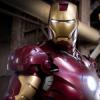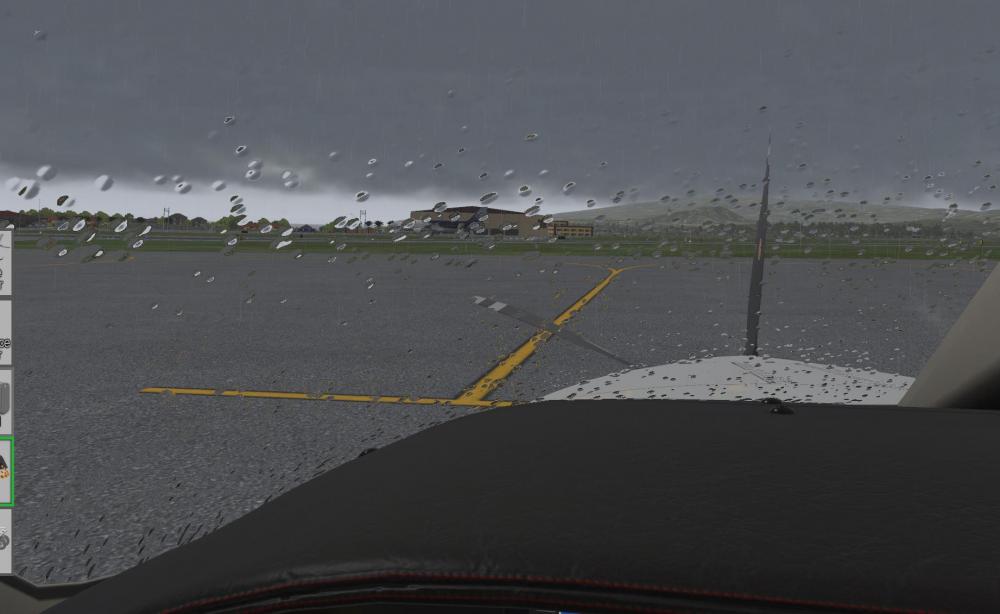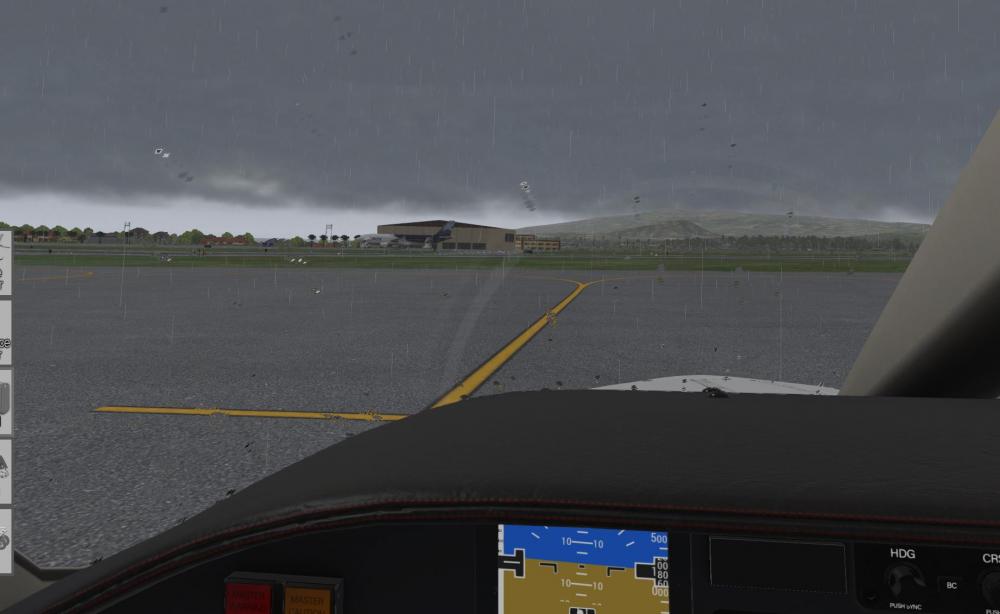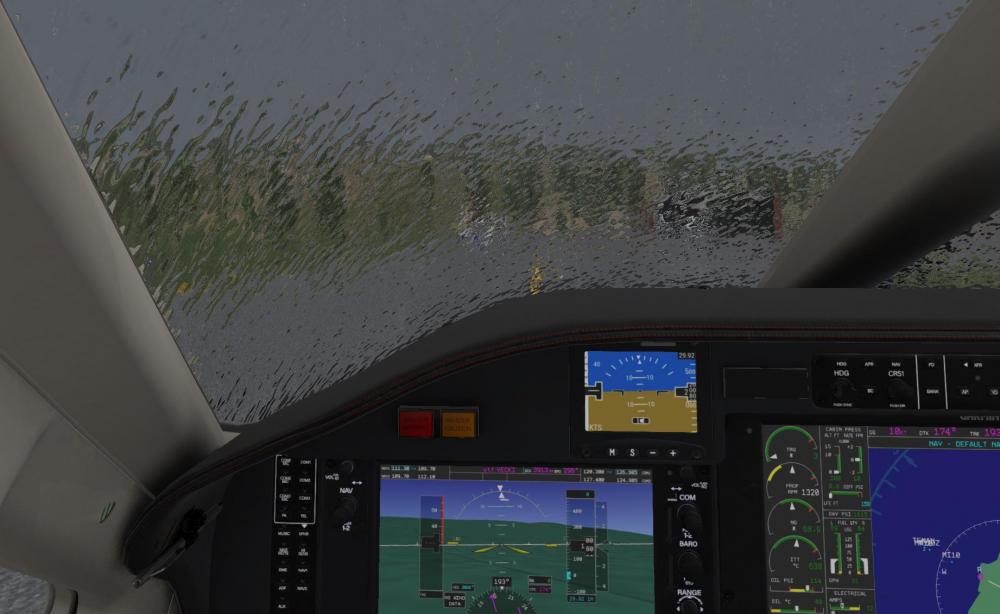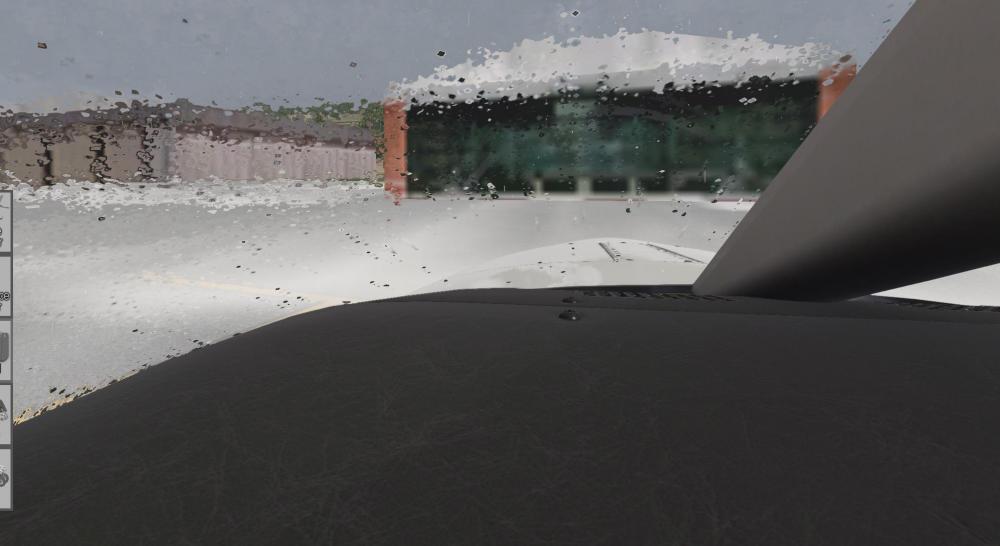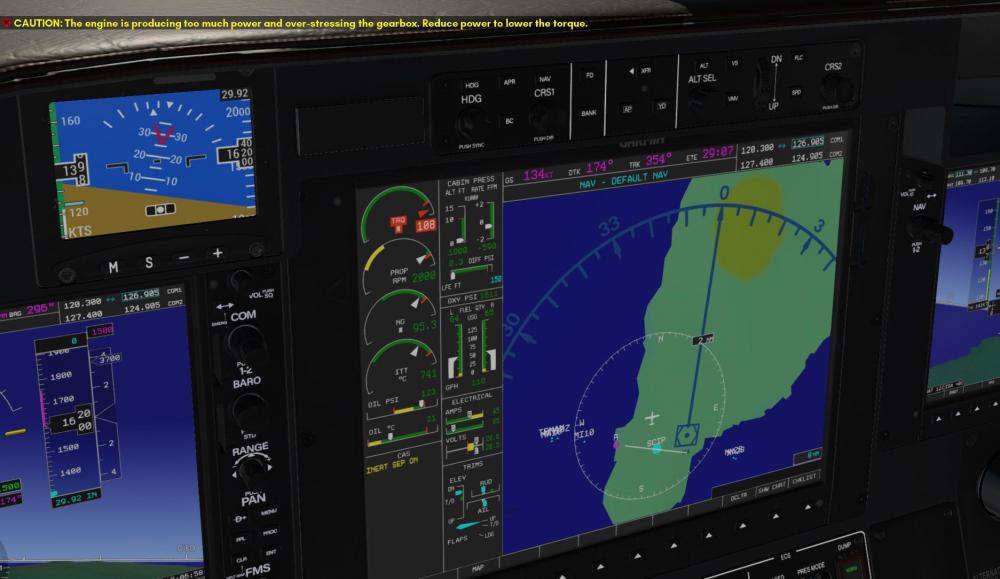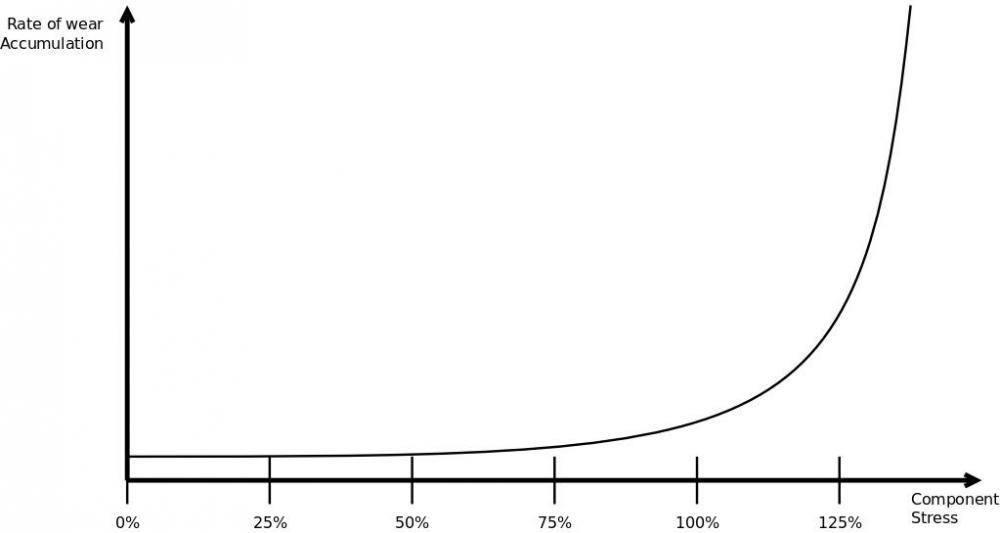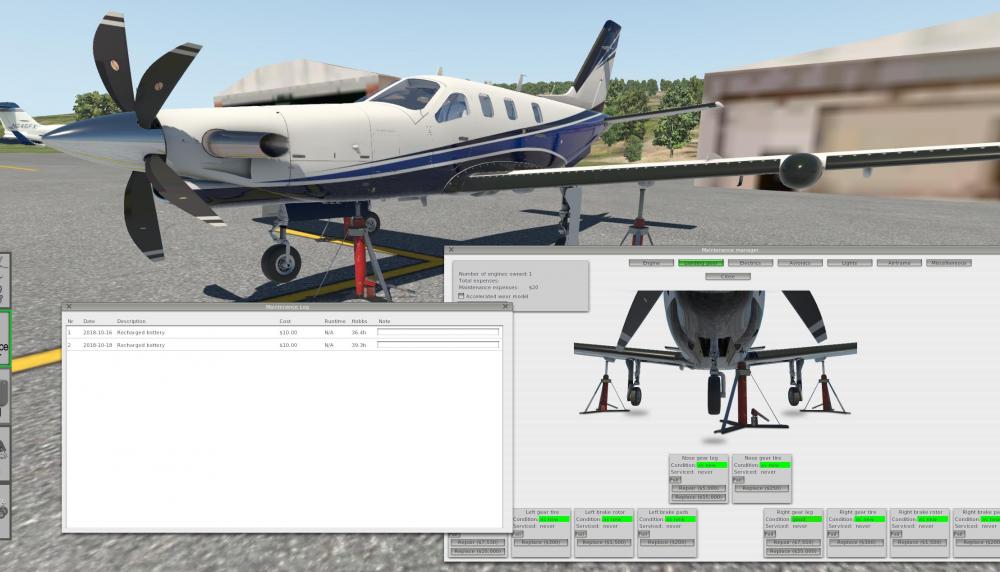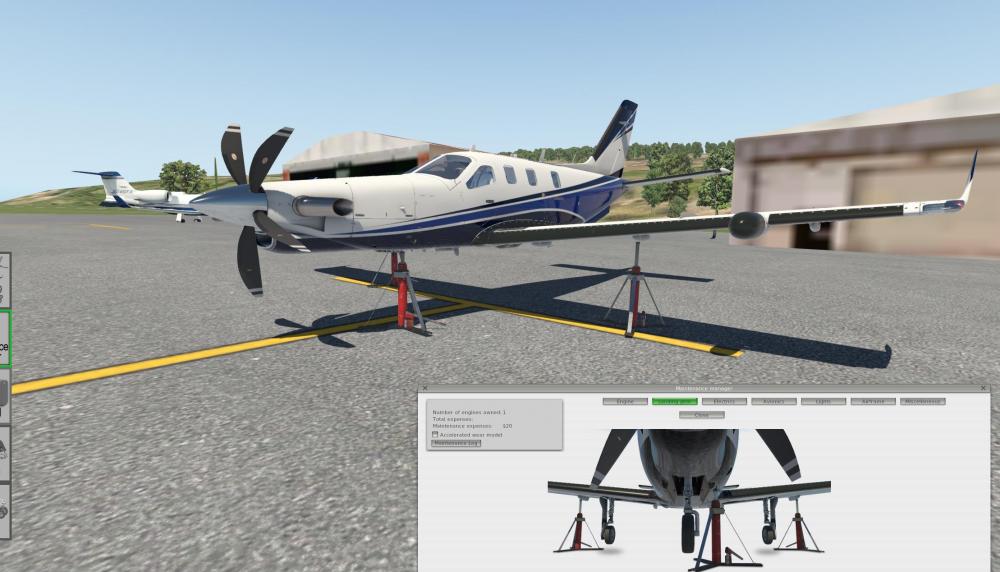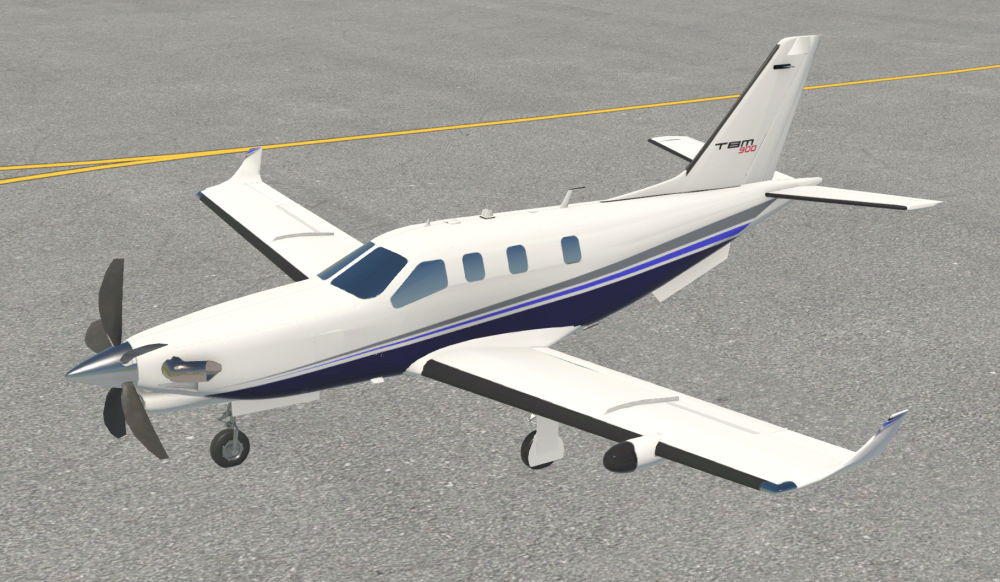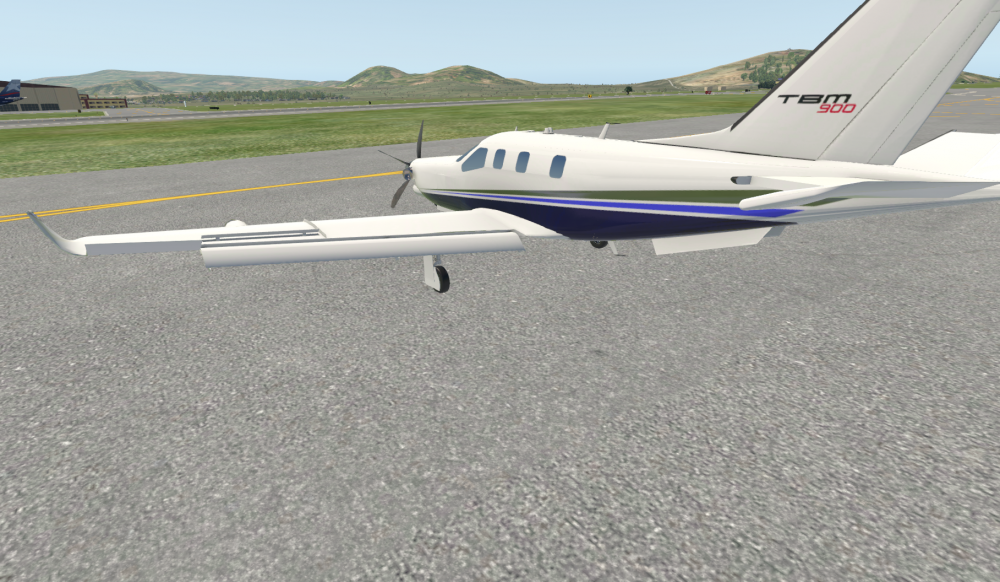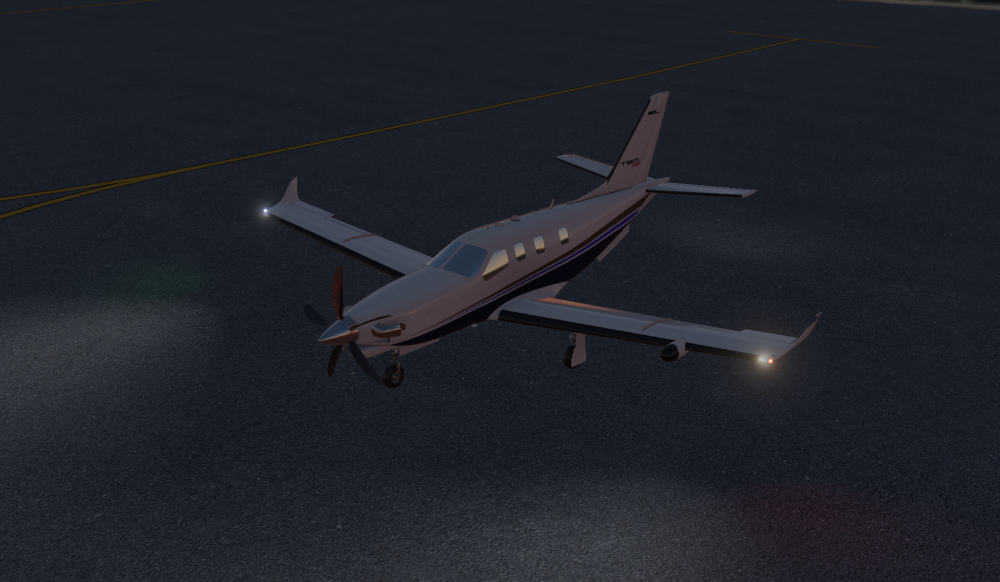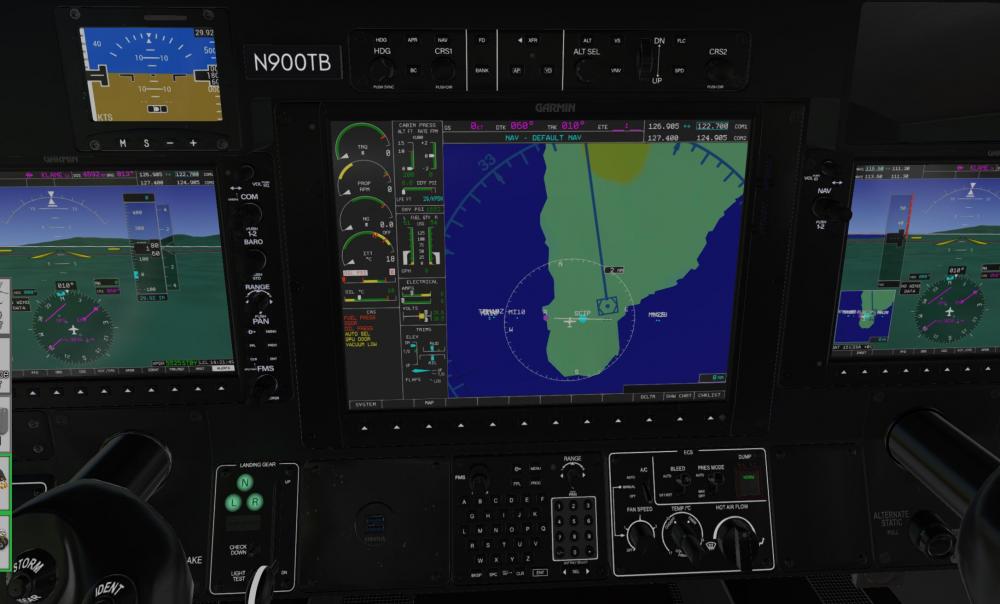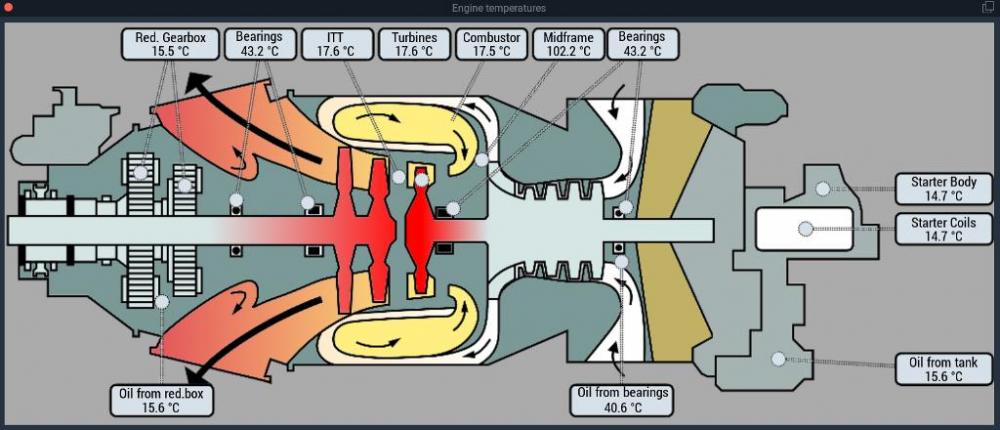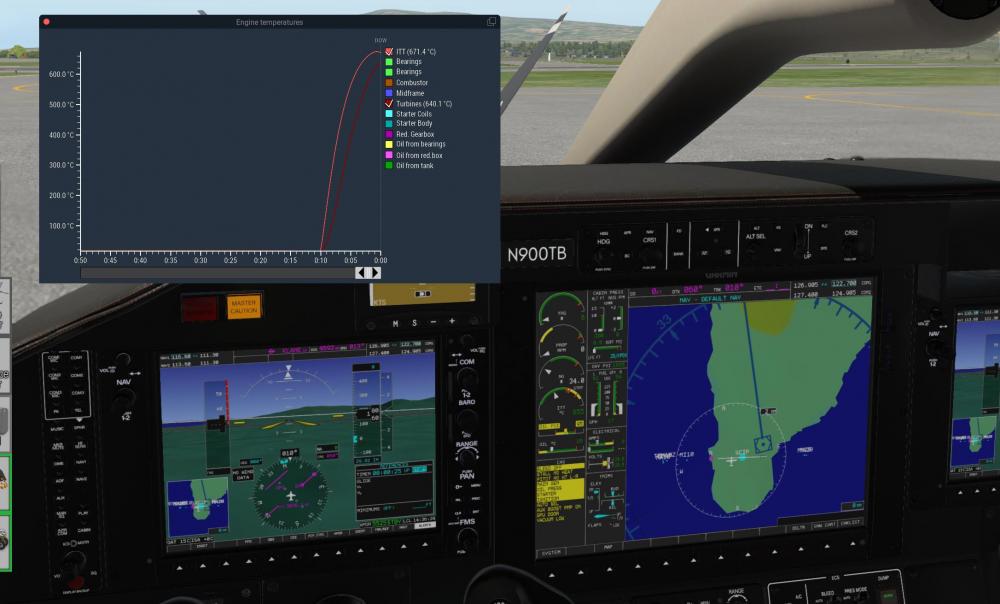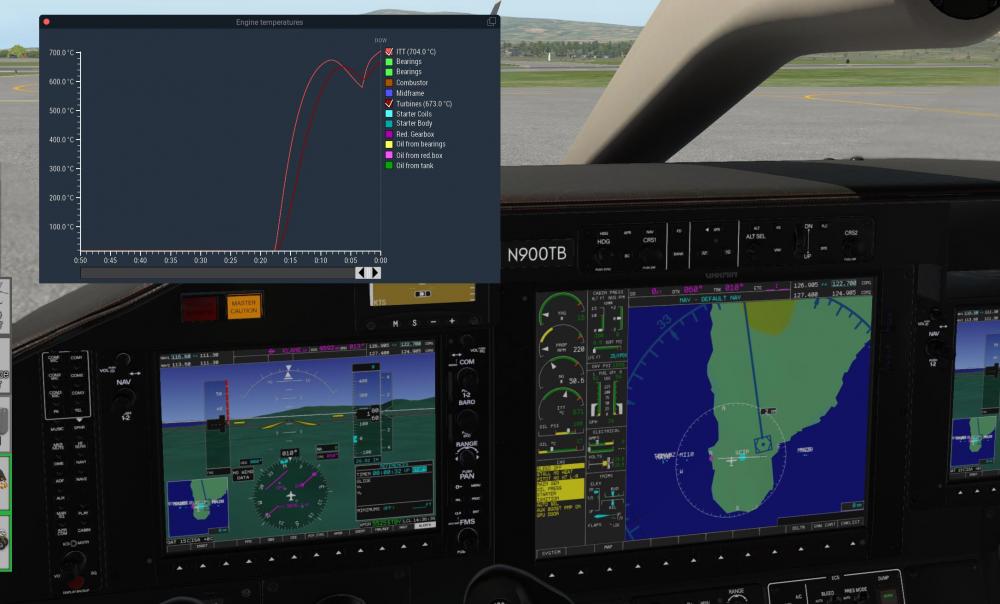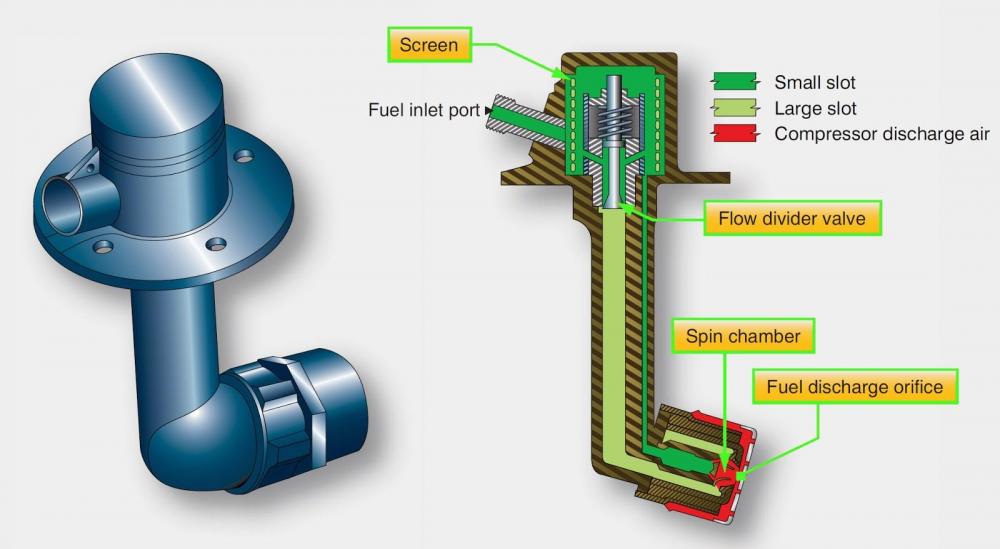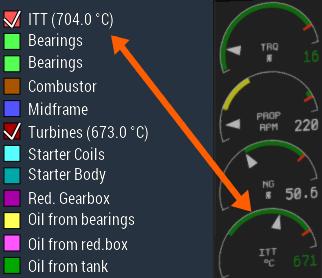Leaderboard
Popular Content
Showing content with the highest reputation on 10/19/2018 in all areas
-
Captains, In just less than 7 hours from the time I write this the TBM will be released (Midnight EST)! Today we are going to discuss rain effects, and as usual more can be seen in action on today's final livestream happening at 6:30pm EST (2230 Zulu). You can watch the livestream by clicking here! (Previously Recorded) Now, let's talk about precipitation! Although we often wish for it, not every flying day is sunny. Whether it's just a light shower, or a full blown thunderstorm, we have paid particular attention to make sure your simming experience will always be an immersive one. To that end, we have taken the "let's make it physically accurate" approach to rain simulation. So how does it work? The entire explanation is several thousand lines of C and OpenGL shader code long, but in short, it works roughly like this: 1) The rain simulation gets precipitation intensity from X-Plane 2) Based on the intensity it randomly generates where drops on the windshield have fallen (taking into account a host of factors such as window slant) 3) We computes forces on every portion of the windshield, such as acceleration, propeller thrust and wind velocity 4) We move the water around on the windshield, allow for things such as droplets to merge, evaporate and just roll around 5) Based on the depth of water at each point, we refract the light coming at you from the outside world, giving the illusion of looking through water droplets And the best part: it's all done on the GPU. GPUs are unbelievably scalable computational systems and can do this kind of simulation with relative ease. So we can get amazing behavior, such as the droplets being blown away by propeller blast with very little FPS cost (although the exact FPS impact will depend on the speed of your GPU): But be careful when flying in heavy precipitation. While on approach, the propeller blast and the aircraft's motion through the air breaks most of the droplets apart and helps clear the windshield: But slow down with little propeller thrust and the windshield can become absolutely innundated if the downpour is strong enough: And why we were simulating water flow, why not incorporate windshield temperature into the calculation as well and display ice as well? To deice the windshield in this case, in the TBM you have a choice of two systems (which can even be combined for maximum effect). There is the good old electrical heater. Powerful, but draws a lot of power, so the manufacturer has limited it to a small portion of the windshield: Or you can try to use hot bleed air used to heat the cabin. Simply redirect it to the windshield defrost vents and watch the ice melt away. But as you can imagine, both of these systems have their capacity limits. So don't expect to always have a clear windshield as if nothing was happening outside. We've set up the simulation to be as realistic as possible training a heathy respect for the weather and learning the limitations of the aircraft. We'll see you in the livestream linked at the top of this page, and more importantly, for the release that's only hours away!4 points
-
Captains, Continuing on with our release date announcement series, today we are going to discuss maintenance wear and tear here, and seen in action on today's livestream happening at 6:30pm EST (2230 Zulu). You can watch the livestream by clicking here! (Previously Recorded) And now, let's talk about maintenance! While designing the TBM900 systems simulation, one our core areas of focus was on making a simulation that feels like you're caring for a real machine. And one of the things real machines require is maintenance. Now plenty of simulation vendors have implemented maintenance features. And quite often, in order to show it off, the programmers like to overdo it. I'm sure we can all share some stories of excessive plug fouling simulation. And because the effect is so pronounced, developers then need to make it an on-off option, so as not to annoy too many of their users. While fun at first, we feel this sort of approach mostly misses the goal of simulation: teaching. When the maintenance feature is overdone, it becomes overbearing, and users disable it. And when it's not there at all, users ignore it. In short, it becomes a gimmick. Instead, we want to give you the appreciation for what makes real aircraft tick. To that end, the TBM900's wear simulation features are NOT optional. They are always on. If you overstress the aircraft too much, it will reflect in accelerated component wear. For example, here we have a pilot who just inattentively shoved the throttle full forward on takeoff without considering the torque limit: How will this reflect on the aircraft model? Well initially not very terribly. When the aircraft was designed, it was designed with occasional mistakes in mind. The engine is equipped with a torque limiter, which will prevent catastrophic over-torquing of the engine. But over time, this will gradually build. How does this work in more detail? I'm afraid, we won't be able to avoid a graph here, but I will try to keep it informative. Here you can see how the aircraft roughly estimates component wear. For each component, we have a "stress factor" (which can actually be a number of inputs, such as temperature, torque, voltage, etc.). The more stress the component experiences, the faster the wear accumulates. This graph is very simple, in actual fact the system uses a much more complicated algorithm, but this should give you an idea. Treat your aircraft well, and it will carry you for a long time. But even if you mistreat it a little, it won't immediately combust. All of this then factors into our goal of showing you how the aircraft is put together. So when you bring up the maintenance manager, you will immediately notice that the aircraft not only has big blocks like "ENGINE". We break up each individual system into sub-components. Below you can see how the engine is built up: And yes, there are prices assigned to each service item. So each of the parts, assuming they are worn enough, you can either try to repair, or replace outright. Repairing is cheaper, but it may not get the aircraft up to fully a functional state. Replacing a component is more costly, but it restores full maintenance. The aircraft keeps track of everything you do in a maintenance log: I know you are dying to know the answer. Yes you can: Join us tonight on the livestream at the top of this post, and again tomorrow for a brief overlook of the custom graphical effects we've implemented for flight in less than ideal conditions! See you again soon!3 points
-
2 points
-
Current charts can be downloaded directly into the G1000 from the FAA website (U.S) and from aerorouters (Europe...as long as you have an account). And you DO need an internet connection. They are not "built in". Navigraph implementation is being worked on for a future update.2 points
-
Just wanted to hop in here and tell you; RTX 2080 Ti works very well with X-Plane. 100% utilization, silky smooth frame rate at 45-60 fps in areas I'd never even think of getting such numbers. (tested with the C172 which I fly most of the time now), my monitor is 3440x1440 resolution. If I make the window 1920x1080 I get 70-80 fps. Visual Effects: Maximum (HDR+SSAO) Texture Quality: Maximum AA: 4x SSAA Number of World Objects: Maximum Reflection: Minimal (saves a lot of frames) The fact the GPU is at 100% utilization tells me X-plane is power hungry, and want a lot more!1 point
-
1 point
-
Captains, After more than one year of full time development I am pleased to announce the TBM-900 is on short final and will be ready for your hangars this weekend! Releasing Saturday at Midnight Eastern Standard Time (get ready to hit that buy button Friday night!). The TBM-900 is the most complex turboprop aircraft simulation produced for X-Plane to date, and one of the most interactive of all aircraft ever produced up till now. We truly believe this will make for a very exciting experience as you fly through the skies! Because of the complexities of the aircraft, and the fact that text is not always the most fun way to digest information, we will be doing a daily 1 hour livestream video session. Each day we will announce which time it starts, with the first one starting in just a few short hours today at 6:30 pm EST (2230 Zulu). You can watch the livestream by clicking here! (Previously Recorded) A brief run down of the core feature list is here: Heavily multi-threaded systems architecture to leverage performance of modern CPUs with many cores. Flight model tuned to perform to within a few percent of the real aircraft in the normal flight envelope, including maximum and stall speeds, rate of climb, fuel burn, trim behavior and control feel. Full aircraft state persistence. Every switch, flight control position, fuel state and on-airport position is restored upon reload. Even between reloads, system resources change in real time. The engine and oil cools down slowly between flights, the battery drains, tires slowly deflate, etc. Fine-grained systems model, down to individual sub-components. The always-on failure system realistically responds to wear & tear and overstress for each sub-component based on individual load factors. Over-torque, over-temp, frequent starts, hard landings, operating in FOD-contaminated environments and many more all affect individual sub-component wear & tear and service life. Sub-component wear realistically reflects on aircraft performance. Worn engine parts reduce maximum available power, worn prop reduces top speed, worn tires result in worse grip during ground ops, etc. Aircraft maintenance manager to inspect and repair or replace any damaged sub-component. The maintenance manager tracks per-airframe operating expenses in a realistic manner to show the real cost of operating the aircraft. Airframe manager that allows you to operate multiple simulated airframes, each with their own independently tracked wear & tear, livery selections and custom registration marks applied. Airframes can be automatically synchronized between multiple machines over the network with just a few clicks. This automatically syncs up aircraft position, configuration and wear & tear to simulate multiple users sharing the same physical aircraft. See how your fellow pilots treated the aircraft by checking the maintenance manager and engine trend monitoring outputs. X-Plane 11 G1000 avionics stack with lots of customizations and overlays to simulate the special extensions in the real TBM900. This includes a custom EICAS, systems synoptic pages and special integration with the extra simulated systems such as the weather radar, TAS, electrics, etc. Integrated Synthetic Vision into the PFD with obstacle display, navigation pathways, airport labels and TAWS-B integration. Integrated live charts display from FAA and Autorouter.aero. Navigraph integration will be available in a future update. Fully custom electrical system. Simulation of all buses, switching behaviors and reconfigurations. Full circuit breaker system, integrated with the X-Plane failure system, so a failed or failing system can pop a breaker. Highly accurate PT6 engine model with realistic startup and operating behavior. Engine lag, secondary fuel flow, ITT evolution, response to auxiliary load and many more fine-grained behaviors. Custom prop governor, with all modes simulated, including electric auto-feather with negative torque sensing. Crew Alerting System integrated into the avionics stack with all annunciations, takeoff/landing inhibits, flight state filters and "corner cases" simulated. Environmental Control System integrated into the custom EICAS. Air conditioning and pressurization respond in real time to environmental factors such as ambient temperature, pressure, available engine bleed air, cabin temperature setting, cabin pressure vessel failures, etc. Custom TAWS-B ground proximity warning system with all annunciations modes, inhibits, real-time impact point prediction and terrain painting up on the MFD to ranges of 200NM. The TAWS-B uses the X-Plane terrain DSF data to construct its database, so it is always "up to date". GWX 70 weather radar with weather & ground modes and realistic radar return painting. Full simulation of radar beam energy dissipation, signal attenuation when passing through dense weather and vertical cell analysis modes. Terrain mapping accurately paints surface features, including recognizable peaks, valleys and lakes. Supports the X-Plane 11 default atmospheric model as well as xEnviro. GTS 820 Traffic Advisory System (TAS) with aural alerts + visual alerts, the TAS MFD page and compatibility with X-Plane default traffic, PilotEdge, Vatsim and IVAO. Full simulation of the ESI-2000 standby instrument, including all configuration pages, sensor failures, AHRS drift and "roll-over" during extreme maneuvers, realistic battery operation and real-time battery depletion, etc. Dynamic custom registration mark paiting on the fuselage and instrument panel with support for custom TrueType fonts, colors and positioning. This lets livery painters make a "generic" livery and each pilot apply their own custom registration mark with just the click of a button directly in the simulator. Liveries can specify a custom position and font to optimize the look. Custom sound engine with samples from the real aircraft and accurate modeling of individual engine states and sub-component noises such as fuel pumps, gear pumps, flap actuators, etc. Now, let's roll onto our first day of systems overview briefs we will be doing up till release day! From the start, we have been focusing on making the aircraft "feel" like a real machine. And if you have dealt with real aircraft, you will know that they can be moody at times. Sometimes the engine starts on the first try, sometimes it just seems to want to drag its feet. Other times, you come up to the aircraft and the battery is strangely low, so you need to sit on the ramp after engine start a bit longer to let it charge up. While working on the core systems model in the TBM900, we have taken a great deal of time to focus on getting this kind "personality" coded into the aircraft. Looking at the above image, a watchful eye can immediately see that the "ITT" display is reading 18 degrees C. But the outside air temperature is just 15 degrees C. That slight discrepancy can be due to a number of factors. It could be a sensor inaccuracy. Or it might be some residual heat from a previous engine run. To provide such minute effects, under the hood the systems simulation actually breaks the engine up into tiny pieces and models heat flow between them. Normally those kinds of details would be inaccessible to the end user, but we have decided to go in the opposite direction. We will not only let you see the system details, we have built-in analysis tools for you to examine systems behavior in real time. All of the fields you see above are clickable and can be displayed like a graph of the last 10 minutes. While flying aircraft, we tend to forget about all the complexity that happens behind the scenes. We push a button and things just happen. But with the analytics screens built into our model, you can get an appreciation of what goes on inside the machine to make things go. Let's go for an engine start. We will skip most of the boring part of the engine start, that is the initial motoring and come right after fuel introduction. You can see that the engine has passed its critical "hot" point around 30% NG, but to help you visualize the engine model, I have brough up the ITT and Turbine temperature graphs. You can immediately see how the turbine temperature lags behind the ITT. That's because the ITT is the temperature of the exhaust gasses, while the turbines themselves contain quite a bit of mass of metal that needs to be heated. As the engine accelerates, you will see a double ITT spike that is very characteristic of the PT6 engine. No other aircraft model that we're aware of reproduces this correctly. The second ITT spike comes because the engine start is actually performed in two steps. The full fuel flow required to start the engine and bring it up to its low idle condition is too great at the low engine speeds. It would simply cause excessive engine temperatures during starting, which would significantly shorten component lifespan. So instead, the PT6 (and many other turbine engines) contains "duplex fuel nozzles". As you can see the fuel nozzle has two circuits, a small primary (darker green) and a larger secondary (lighter green). The primary is rigged with a flow divider valve that is spring-loaded to actuate above a certain fuel pressure. This is calibrated so that once the engine reaches 42% NG, the fuel pressure exceeds the spring tension and opens up the second fuel port and allows more fuel into the engine. In the TBM this manifests as a sudden rise in fuel flow from approximately 18 gallons per hour to 25 gallons per hour. There is also an audible rise in engine acceleration. The observant among you will also no doubt have noticed that the ITT display on the EICAS (Engine Indication and Crew Alerting System) is different from the graph value. The reason for that is rather simple if you think about how real sensors work. The sensor surface itself is a metal stud inserted into the gas flow. As such, it too takes a bit to warm up to the real gas flow temperature. In addition, the sensor is an analog device. There is an analog-to-digital conversion circuit that samples the sensor reading and since real sensor data contains some noise, the sample does input "filtering". In simple terms, it doesn't show the immediate value from the sensor, but instead gradually "filters in" the value sampled into an old reading. This provides output smoothing and a much more stable output value. So always keep in mind that what the aircraft's sensors are showing is probably a couple of seconds old anyway. In the next post tomorrow, we will focus a bit more on avionics and some of the cool features we have developed in that department. Stay tuned, and we look forward to seeing you in the TBM filled skies this weekend!1 point
-
1 point
-
1 point
-
1 point
-
Morning all. Norwegian (the real airline) are starting flights from Argentina, Buenos Aires or the 16th of October, LV-HQH has been for route proving in the last few months, flying from the Norwegian paint shop in Stockholm via Canary Islands and Brazil. It returned on the 5th of October in preparation for the first flight. Norwegian virtual will simulate this timetable so I also plan a ferry flight, some local area training, at start the first flight on the 16th or the 17th. I have the scenery all sorted, the original content of this thread was a request to have a new livery with the correct tail code, but I managed to change it myself, see below. Look forward to updating you in the next few days, and eventually have a short youtube video of the first flight. Fresh out the paint shop1 point
-
Laminar Research has released X-Plane 10.45 RC-1 to the wild. As per their release, "X-Plane 10.45 is a “small” patch for us in that it doesn’t contain major changes to the code, but it contains a number of features you might like." Changes include: An update to the global airports. The global airports won’t conflict with custom scenery – new exclusion technology prevents overlapping buildings. Nav data has been significantly updated – lots of bug fixes are in 10.45. The GPS data for the G430 now contains IAFs, so you can fly GPS approaches with proper transitions. Proper prop torque for aircraft that opt in.1 point
-
Hey everyone! BIG update: Wing modelling is wrong (looks like 200ER wings with raked wingtips stuck at the end, fuselage is too low poly in contrast to the rest of the modelling, engine shape is wrong too (GE90-95 engines from the 200ER not the 300ER/200LR GE90s). I'm redoing most of the modelling, starting with brand new engine, fuselage, and wing modelling. Landing gear has been refined with better animations and the inclusion of the 300ER specific cantilever system on the front of the main landing gears. - The textures is another highlight, with the fuselage split into 4 sections - each with 4K textures with almost every nut, bolt and rivet textured. - Engines has been completely remodelled, with new cowling that accurately reflect the GE90-115B/110B engines. - The wing is one of the biggest change, from 7 wing cuts to a staggering 11 wing cuts, ensuring an extremely satisfying and smooth wing flex. Slats have been correctly animated, flaps mechanism has been modelled and so on. Enjoy the screenshots!1 point


